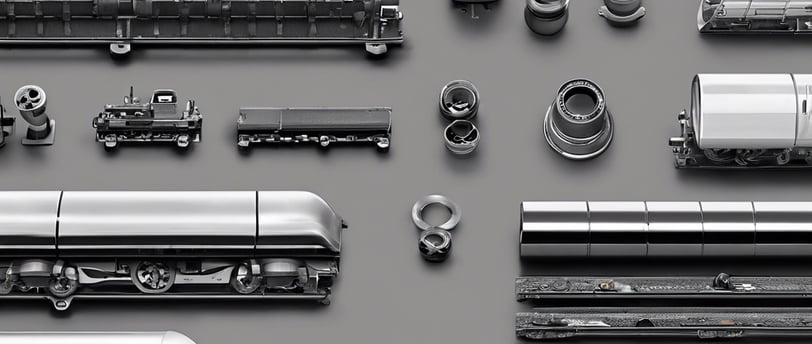When to Choose New vs. Used Rolling Stock Parts: A Decision Guide
Vytautas Bimba
4/15/20242 min read


Maintaining your freight wagons involves making informed decisions about parts. While used parts offer significant cost savings, new parts might be necessary in certain situations. This guide will help you navigate when to choose new vs. used rolling stock parts:
Opt for New Parts When:
Safety is Paramount: When a part failure could compromise safety, prioritize a new part. This includes critical components like brake systems, couplers, and wheels.
Warranty Coverage: If a repair falls under warranty, using a new OEM (Original Equipment Manufacturer) part may be necessary to maintain warranty coverage.
Limited Availability in Used Market: If a specific part is not readily available in the used market or the wait time is unacceptable for your operations, a new part might be the only viable option.
Severe Wear or Damage: For parts significantly worn or damaged beyond repair, a new part is the safest and most reliable choice.
Performance Requirements: If your wagons require parts with specific performance characteristics not readily available in the used market (e.g., high-capacity bearings), a new part might be necessary.
Choose High-Quality Used Parts When:
Cost Savings: Used parts can offer significant cost savings compared to new ones, especially for non-critical components.
Extending Wagon Life: Used parts can effectively extend the lifespan of your wagons, keeping them operational for longer.
Sustainability: Using high-quality used parts promotes sustainability by reducing waste and resource consumption.
Quick Replacement Needs: In urgent situations where immediate replacement is required, the readily available used parts can be a timely solution.
Compatibility with Older Models: For older wagon models where new parts may be discontinued or hard to find, high-quality used parts can be a viable alternative.
Here are some additional factors to consider:
Inspection Standards: Choose a reputable used parts supplier with rigorous inspection processes to ensure parts meet quality and safety standards.
Warranty Options: Explore whether your used parts supplier offers any warranties or guarantees on their parts.
Compatibility: Double-check the compatibility of the used part with your specific wagon model to avoid any installation issues.
Expertise Available: If you're unsure about a part's suitability, consult a professional parts specialist or your wagon's maintenance manual.
Ultimately, the decision between new and used parts depends on your specific needs and priorities. By carefully considering the factors outlined above, you can make informed choices that balance safety, cost-effectiveness, and operational efficiency.
